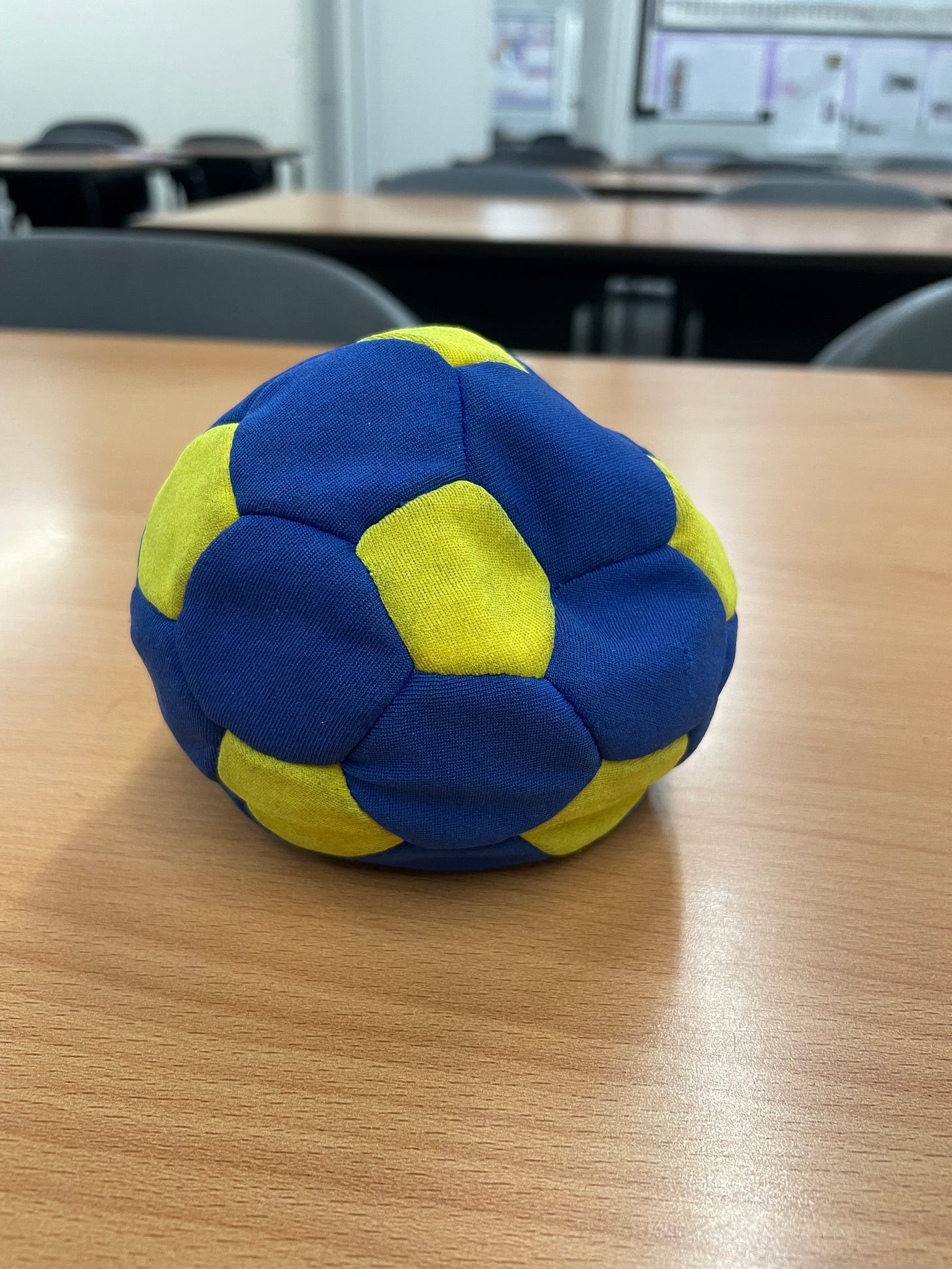You’re a teacher.
Therefore, I know with cast-iron certainty that you’ll understand the following scenario.
You’ve prepared an belter of a lesson, and you’re ready to deliver the performance of your lifetime. You dive in headfirst, giving it the soup. You feel like nature’s gift to the world of theatre (especially after that vocal warm-up and your hours of work on your abdominals).
The lesson starts off strong. The children are on the edge of their seats, eager to impress, itching to show you what they know and to make you proud.
Then, the moment arrives. You cast your most engaging question into the classroom air and wait, anticipation building, for a sea of hands to erupt into waves of enthusiasm — a storm of knowledge in the making.
And what do you get?
Silence.
You could look up the word ‘daydreaming’ in the dictionary and find this exact scene illustrated. No beaming faces. No waves of excitement. No tempest. Not even a wisp of interest.
You try to stir the waters with a cold-call. But the student you choose stares back at you with blank incomprehension. They don’t know the answer and can’t be bothered to try.
In an instant, your heart sinks. You, the Maggie Smith of your school, suddenly feel wasted here. You start to wish you’d stayed in bed and long for a low-stress career in gardening or civil service. Maybe even that you, at this moment, were dead.
But don’t lose heart. For I (or rather, one of my insightful colleagues) have the answer to your problem.
Introducing: The Magic Ball.
The Magic of the Magic Ball
Now, I’m not claiming this ball has some mystical power capable of controlling the minds of its holder. It’s not Harry Potter-level magic.
But the effect it has on classroom engagement is nothing short of magical.
Let’s revisit the aforementioned situ: you’re teaching, you ask a question, and… nothing. Tumbleweed. Crickets. Still water.
But what if being asked also meant catching the magic ball? Suddenly, the children awaken from their ungrateful slumber.
When I pick up this ball, the energy in the room erupts. Engagement and enthusiasm flow like never before. Answers, opinions and knowledge abound.
It really does work like magic.
My Tweaks: Rules for Using the Magic Ball Effectively
However, the magic ball can also disrupt classroom behaviour if not used properly. Excitement can quickly turn into chaos. The calm, focused atmosphere might be replaced by eager hands, loud voices, and children practically leaping out of their seats, desperate for a turn.
Here are a few rules I follow to make sure the magic ball brings engagement without descending into mayhem:
No Hands Up
This is a common expectation in modern classrooms. When a few confident students raise their hands, the rest of the class can tune out, leaving the hard work to others. By enforcing a no-hands-up policy, everyone stays on their toes.
Cold-Calling
Randomly throw the magic ball to different students, giving everyone a chance to participate. This keeps the class engaged because no one can afford to switch off — anyone could be next! It also ensures that every student has an opportunity to contribute.
Ask A About B
Ask students to discuss an answer with a partner. Then, throw the ball to Child A and ask them to tell you what Child B said. Follow this by asking Child A if they agree or not. With this method, you’re engaging two students in one go, deepening the discussion and testing both listening and speaking skills.
Choose Your Moments
Don’t overuse the magic ball. If you use it constantly, its novelty will wear off — and surprisingly quickly. I mainly use it during math lessons, with perhaps one or two other instances throughout the day. Sometimes, I even forget to use it, which, in this case, works in my favor as it keeps things fresh.
Prior Preparation
The introduction of the magic ball can cause excitement to bubble over, so it’s important to explicitly explain how students should behave. Before introducing it, I tell them the following rules:
No hands up.
Always be ready with an answer — right or wrong.
Stay in your seat.
Don’t try to catch the ball if it’s aimed at someone else.
Don’t shout “PICKFORD!” at full volume and leap halfway across the room to catch the ball as if you’ve just saved a penalty at Wembley.
Patience, Young Grasshopper
Embedding these strategies takes time. Some students are used to zoning out during lessons, assuming someone else will answer the question. When they’re suddenly called upon and have nothing prepared, it can be embarrassing. Remind them to be ready, and soon enough, they’ll catch on.
Softly Softly Catchy Student
It almost goes without saying but pick a very, VERY soft ball. No accidents please.
To Sum Up:
The magic ball = engaged students.
Cold-call to ensure everyone participates.
No hands up.
Be patient. It won’t be perfect immediately, but you’ll see results sooner than you think.
Explicitly teach the behaviour you expect from your students. This is VITAL when introducing any new strategy to prevent chaos.
Enjoy your newfound engagement!
Your turn
Unlike before, I’m not writing this newsletter for myself - I’m now writing it more for you. I want to chronicle the expertise I’m blessedly surrounded by and share what I learn with you.
If there’s something in teaching that you find most challenging, let me know in the comments by clicking below. I’ll keep an eye out for it in my own workplace and share what I learn.
You lucky thing, you.






A simple shift to maximise participation. Asking child A to share child B's thoughts is also a strategy I have had lots of success with :) Great ideas!
I need the equivalent in a totally remote ( zoom call) setting. what ideas do you have?